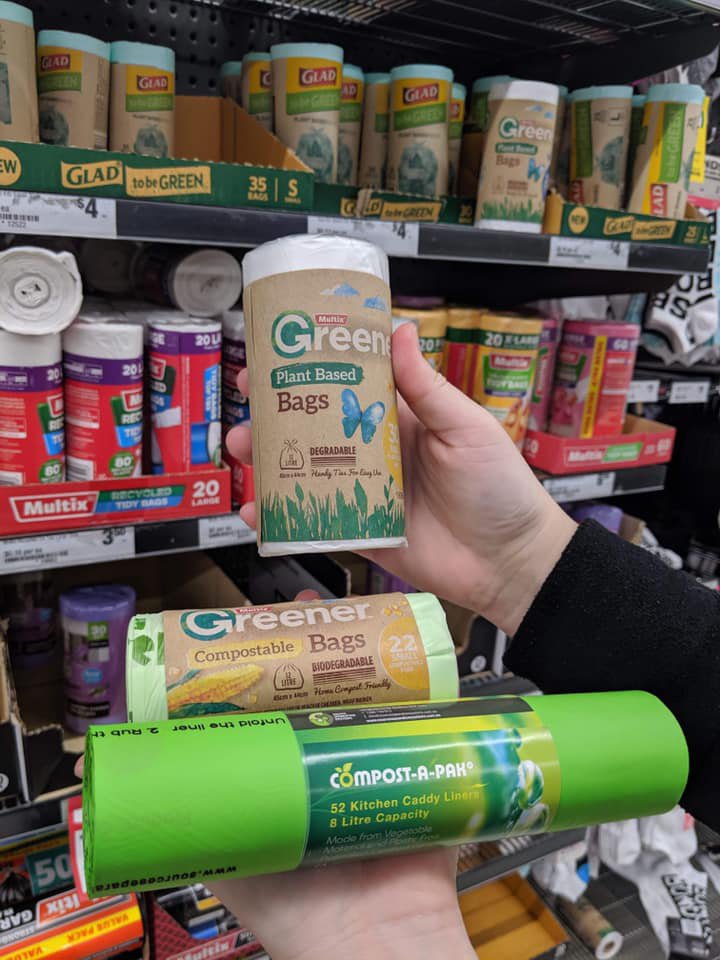Thanks to Veronica Maree for this great Facebook article.
Okay, let’s talk about what’s best for the kitchen bin.
I took this pic at Woolworths, and I’m a little frustrated because of how deceiving and confusing this is for the regular shopper just trying their best to make a good decision at the checkout.
Multix have come out with a ‘greener’ bin liner option. Looks great on the outside, but let’s break this down.
The top bag I’m holding is labeled ‘plant based’. Okay, sounds positive right? Well, yeh that’s a positive, it also states that it’s “made from 60% plant-based material, a renewable resource from the sugarcane industry” which is indeed a great move, but if you look closely, it is also labelled as ‘degradable’. Now, degradable is not to be confused with ‘biodegradable’ because anything that is degradable will not fully break down into the soil when it ends up in landfill. Instead, it turns into tiny pieces of plastic that will never break down, continuing the micro plastics issue we currently face in our oceans. Probably not a great option.
Okay the second option, same brand, being Multix, same ‘greener’ bold labelling, but here are the differences.
Firstly, instead of ‘plant based’ labelling, they have it labelled as ‘compostable’. It also states that it’s ‘biodegradable’. This is where it makes ALL the difference. So compostable and biodegradable are sort of the same, but sort of not. To the average person, it would seem the same, but here are the slight differences. They both aim to break down safely into the earth, however, biodegradable is made for breaking down in landfills, and compostable is made with a specific set of requirements to break down safely in a compost. Usually the compostable bags are quicker to break down too. So if you were after a bag safe to put into your compost bin, I can understand how this could be confusing. I looked closer on the back of the label and it is marked as “home compostable AS 5810 ABAP 20006” and “compostable AS 4736 ABAP 10060”. These numbers refer to the certification from the Australian Bioplastics Association. This is a good option to purchase, and they have different sizes to choose from, plus it is labelled as safe for composts too, so double great.
Lastly, I wanted to shed light on another brand called ‘compost-a-pak”. These were so clearly marked compostable, with zero confusing labels. This is also certified and marked on the back of the label “compostable certification number AS 4736-2006 ABAP 10019” and “home compostable certification number ABAP 20001”. It also states under the headline “made from vegetable material and plastic free. Australian certified compostable”.
This is so crystal clear and easy to understand, and I wanted to show the stark difference in the marketing and labelling. I’ve seen many people putting the first option on the conveyor belt at the checkout and I know those people are just trying to make the best decision, but it’s not fair that they’re being misled. I couldn’t find other sizes in this brand besides the one, but it’s still a very good option.
I hope this helps you make your decision a little easier when you go shopping next .
Thank you Veronica! It's a damn nuisance when you need a bookful of facts just to be green! ~Ian

